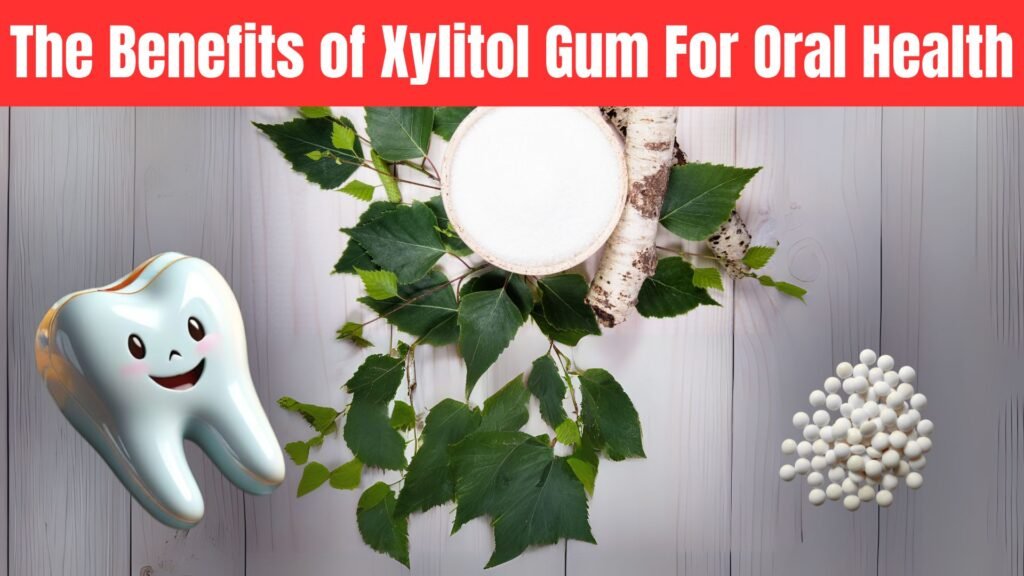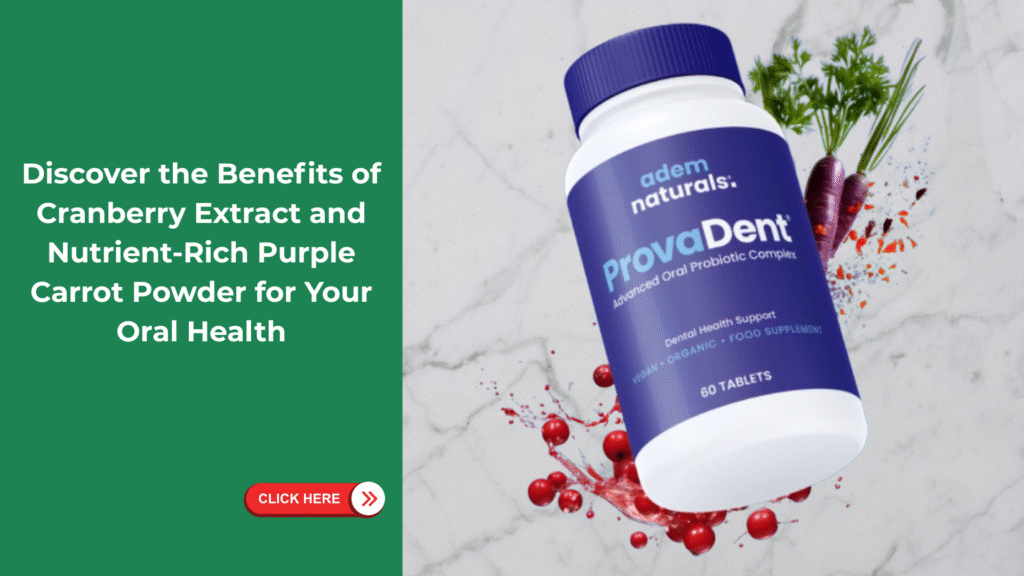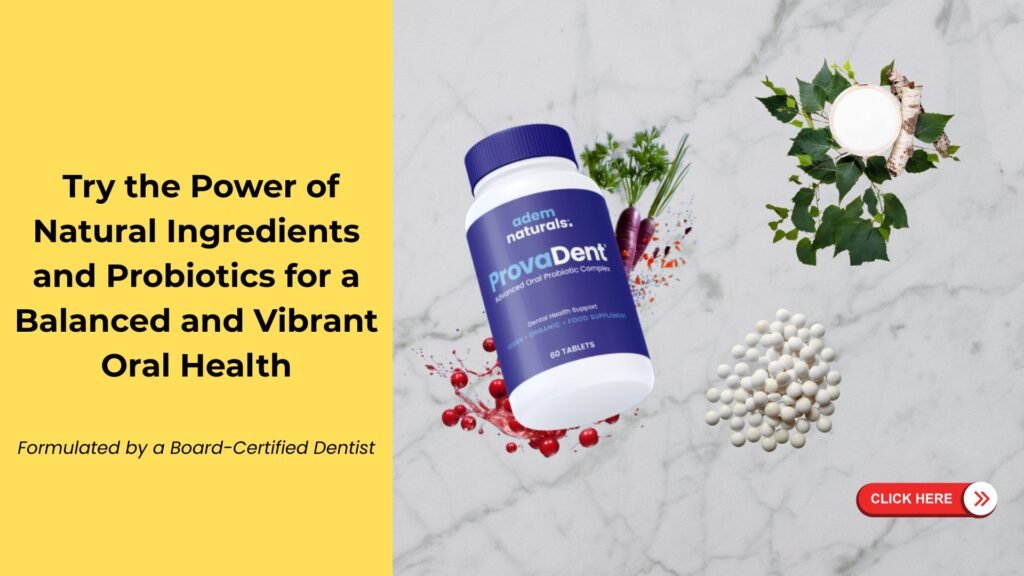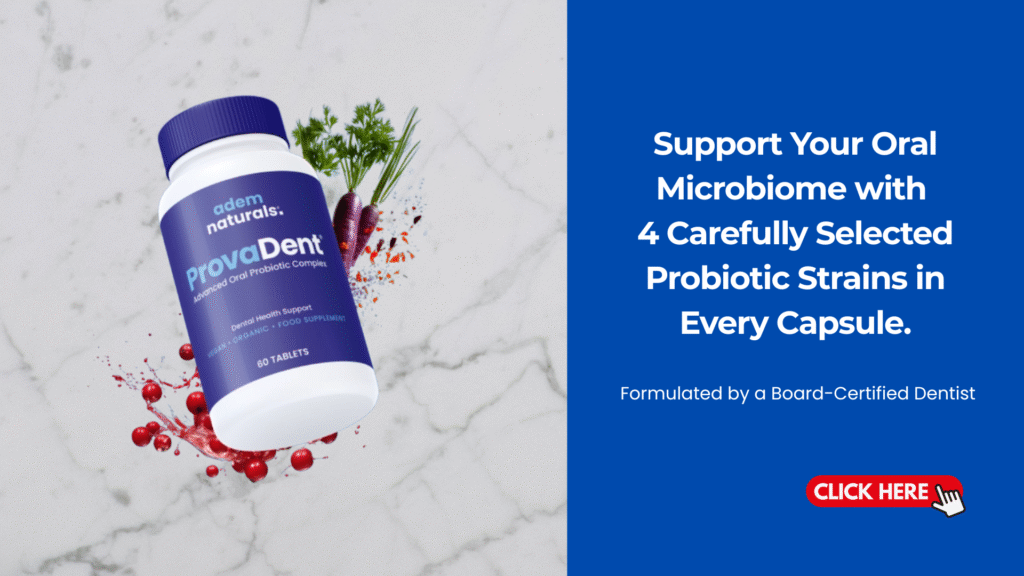Let’s face it. Brushing and flossing just don’t cut it anymore. Despite doing “everything right,” millions still suffer from cavities, gum disease, and bad breath. Why? Because the bacteria responsible for these problems keep working long after you’ve brushed your teeth.
Here’s the good news: there’s a simple, science-backed solution that works between brushing. And no, it doesn’t involve mouthwash, dental gadgets, or complicated routines.
It’s Xylitol.
In this post, you’ll discover how xylitol gum is an easy to use and science-backed solution that can transform your dental health—anytime, anywhere. We’ll explore how it works, when to use it, what kind to buy, and why it’s quietly becoming the best-kept secret in dental care.
Table of Contents
ToggleWhy You Still Get Cavities (Even If You Brush & Floss)
We’ve been taught that brushing twice a day and flossing once daily are the cornerstones of oral hygiene. And yes, these practices are important. But they only address part of the problem.
The real issue? Harmful bacteria—especially Streptococcus mutans—that thrive in your mouth between meals and between brushing.
These bacteria feast on sugars and starches, releasing acids that weaken and demineralize your enamel. Over time, that means cavities, sensitivity, and inflammation. Traditional oral care simply doesn’t protect you around the clock.
This is where Xylitol gum steps in to fill the gap.

What Is Xylitol, and Why Is It So Powerful?
Imagine a sweetener that tastes like sugar, satisfies your cravings, and actually fights cavities instead of causing them.
That’s not fantasy—it’s Xylitol.
Xylitol is a naturally occurring sugar alcohol found in small amounts in fruits and vegetables. It looks and tastes like sugar, but it doesn’t act like it. With a low glycemic index and nearly zero calories, it’s already a popular substitute for people managing blood sugar or watching their weight. But here’s what makes Xylitol truly groundbreaking: it’s not just harmless to your teeth, it’s actively protective.
You see, most dental issues start with a nasty little bacteria called Streptococcus mutans. It thrives on the sugar you eat, producing acid that slowly erodes your enamel, forming cavities and damaging gum tissue.
But here’s the twist: Strep mutans can’t tell the difference between sugar and Xylitol. It eagerly gobbles it up—only to discover that it’s a trap. Xylitol cannot be metabolized by these bacteria, so they essentially starve. Even better, they stop producing that destructive acid. Over time, their population plummets, and the pH of your mouth stays neutral instead of turning acidic.
The result?
- Your enamel stays strong and protected.
- Cavity risk drops dramatically.
- Gum inflammation begins to ease.
- Your whole mouth becomes a healthier environment.
This is the genius of Xylitol gum: it arms you with an effortless, scientifically proven way to change the chemistry of your mouth in your favor. No toothbrush required. No rinse. No complicated gadgets.
You chew. You smile. You protect your teeth—all at once.
And unlike harsh chemical mouthwashes or artificial sweeteners with questionable reputations, Xylitol is naturally derived, gentle on the body, and supported by decades of research in dental science. That’s why so many dentists are recommending Xylitol as part of a comprehensive, modern oral health protocol.
Whether you’re trying to reduce cavities, avoid costly dental treatments, or just want fresher breath and stronger teeth, Xylitol gives you an edge.
And when you use it in gum form? Xylitol gum becomes the simplest upgrade your mouth didn’t know it needed.
When and How to Use It for Maximum Benefit
Let’s get one thing straight—xylitol gum isn’t just a trendy wellness gimmick. It’s a practical, powerful tool that can easily fit into your everyday routine without skipping a beat. The best part? It works quietly behind the scenes, defending your teeth long after you’ve finished brushing.
Using xylitol gum is incredibly simple—and that’s what makes it so effective.
Here’s how to make it part of your daily oral health ritual:
- Chew one to two pieces immediately after meals or snacks.
- Let it dissolve slowly in your mouth while gently chewing for 5 to 10 minutes.
- Avoid rinsing, eating, or drinking right away to allow the xylitol to coat your teeth and gums fully.
This isn’t about chewing gum for the sake of fresh breath. This is about creating a protective chemical environment in your mouth that bacteria cannot thrive in. The act of chewing naturally stimulates saliva production, which supports your mouth’s built-in defense system by neutralizing acids and helping remineralize tooth enamel. Paired with xylitol, it becomes a powerful one-two punch for cavity prevention.
Think about it: most people go hours between brushing—giving harmful bacteria plenty of time to feed, multiply, and do damage. But when you pop a piece of xylitol gum after your meal, you’re throwing a wrench into that destructive cycle. You’re actively starving those acid-producing microbes and protecting your enamel, all with the same ease as reaching for a mint.
And the convenience? Unmatched.
Keep a pack of xylitol gum in your purse, your car, your desk drawer—anywhere you might need it. There’s no sink or mirror required, no complicated steps, and no embarrassing mess. It’s the easiest thing you’ll do all day—and yet the impact on your oral health can be profound.
Even just chewing xylitol gum once or twice a day, especially after your most sugar-heavy meals, can lead to noticeable improvements in how your mouth feels and functions. You’ll likely experience less plaque buildup, reduced sensitivity, and maybe even fewer dentist visits over time.
Whether you’re a busy parent, a frequent traveler, a student, or someone just trying to simplify your self-care routine, xylitol gum is the low-effort, high-reward habit your mouth will thank you for.
Why Xylitol Gum Works Better Than Mouthwash
When it comes to keeping your mouth clean between brushing, most people instinctively reach for mouthwash. It’s quick, it tingles, and it gives you that minty-fresh feeling. But is it actually helping your long-term oral health—or just masking problems temporarily?
The truth is, many over-the-counter mouthwashes are more of a cosmetic solution than a therapeutic one. While they might kill bacteria on contact, they often contain alcohol and other harsh chemicals that disrupt the balance of your oral microbiome. This disruption can dry out your mouth, decrease saliva production, and ironically make you more vulnerable to the very problems you’re trying to avoid—like cavities, gum disease, and bad breath.
That’s where xylitol gum stands out as a smarter, more strategic option.
Unlike mouthwash, xylitol gum doesn’t just rinse your mouth—it actively works to change the oral environment for the better. When you chew xylitol gum, you’re feeding your mouth’s “good bacteria” while simultaneously starving the bad ones—specifically Streptococcus mutans, the primary bacteria responsible for cavities. Xylitol acts like a decoy: the bad bacteria consume it but can’t digest it, which shuts down their acid production and prevents further growth.
Plus, chewing xylitol gum increases your saliva flow, which is a natural and powerful defense mechanism. Saliva neutralizes acid, strengthens enamel, and washes away food particles and bacteria. Mouthwash, on the other hand, does nothing to stimulate saliva—and may even reduce it with continued use.
Another big win? Xylitol gum can be used anywhere, anytime. No bathroom, no sink, no rinse-and-spit routine. It fits effortlessly into your lifestyle—at your desk, in your car, or after dinner on the go.
If you’re looking for a more holistic, biologically smart approach to oral care, xylitol gum isn’t just a substitute for mouthwash—it’s a major upgrade.
Benefits of Xylitol Gum Beyond Cavities
Most people chew gum to freshen their breath or curb a sugar craving—but when you chew xylitol gum, you’re doing something much more powerful. While it’s well-known for its ability to fight cavities, the benefits of xylitol extend far beyond protecting tooth enamel. This simple habit supports your entire oral ecosystem—and even reaches into your gut.
First, let’s talk about your gums. Gum disease is one of the most common health issues in the world, often triggered by inflammation caused by harmful bacteria. Chewing xylitol gum regularly can help reduce that inflammation. It inhibits the growth of pathogens that irritate soft tissues, helping to soothe and protect your gums naturally over time. Healthier gums mean a stronger foundation for your teeth and a lower risk of systemic inflammation in the body.
But the impact of xylitol gum doesn’t stop at your gums.
There’s growing research into the connection between the oral microbiome and the gut microbiome. These two ecosystems are more closely linked than we once thought—after all, your mouth is the entry point to your digestive system. When you balance bacteria in your mouth using xylitol, you may also be supporting microbial harmony further down the line in your gut.
Additionally, xylitol gum helps maintain a healthy pH balance in your mouth, reducing acidity that can lead to enamel erosion and uncomfortable sensitivity. With less acid and more saliva production—both promoted by xylitol—you’re creating a healthier environment for everything from digestion to immune defense.
So yes, xylitol gum helps prevent cavities—but it’s also a holistic wellness tool. With every chew, you’re not just supporting your teeth—you’re promoting total-body balance, from your gums to your gut.
Choosing the Best Xylitol Gum (and What to Avoid)
What to Look for in Quality Xylitol Gum
To get the full benefits of xylitol gum, it’s important to choose the right product. Not all gums on the market deliver the cavity-fighting, microbiome-supporting punch that true xylitol-based formulas offer.
Look for xylitol gum that:
- Lists xylitol as the first or second ingredient
- Uses 100% xylitol as the sweetener (not just a small amount)
- Is free from aspartame, sucralose, or artificial dyes
- Comes from dentist-recommended brands designed for oral health
- Offers transparency in ingredients and xylitol content per piece
What to Avoid
Some gums are marketed as “sugar-free,” but contain very little xylitol—or worse, are packed with artificial sweeteners that offer no dental benefit.
Avoid xylitol gum that:
- Combines xylitol with sugar, sorbitol, or artificial flavors
- Contains harsh chemicals or preservatives
- Uses synthetic gum bases that may irritate sensitive mouths
Doesn’t disclose xylitol quantity per serving
Tip
Here are Dentist Formulated Xylitol gums and mints that I use. And no, you don’t need a prescription. Most xylitol gum are available online or in natural health stores.
Choose wisely, and your xylitol gum will become one of the easiest and most effective tools in your dental care routine.
What the Science Says about Xylitol
You don’t have to take our word for it—xylitol gum is backed by solid science.
Multiple studies have shown that taking xylitol regularly helps reduce cavities, limit harmful bacteria, and support enamel health. One well-known study published in Caries Research found that people who used xylitol consistently had significantly fewer cavities compared to those who didn’t.
Even the American Academy of Pediatric Dentistry recommends xylitol for children at risk for tooth decay. Why? Because it works—plain and simple.
Xylitol doesn’t just stop acid production; it actually prevents harmful bacteria from sticking to your teeth. That’s a huge win for your enamel and overall oral hygiene.
Dentists and oral health professionals around the world trust xylitol gum as part of a modern dental routine. It’s safe, effective, and easy to use—and unlike many products, it’s backed by real results.
When science and simplicity come together, you get one of the most effortless health upgrades available. That’s the power of xylitol gum.
Potential Side Effects
Xylitol is incredibly safe for most people, especially when used in gum or mint form. However, like many sugar alcohols, consuming too much can lead to mild digestive upset.
Here’s how to avoid issues:
- Start slowly: Try just 1–2 pieces of xylitol gum per day at first.
- Increase gradually if needed, but don’t exceed 6–10 grams per day.
- Stick to gum or mints—avoid large quantities of Xylitol-sweetened baked goods.
Also, a note for pet owners: Xylitol is toxic to dogs, so always keep it out of reach of pets.

Xylitol Gum and Saliva
Chewing xylitol gum does more than just fight bad bacteria—it also boosts your body’s natural defense: saliva.
Saliva plays a critical role in oral health. It neutralizes acids, washes away food particles, and delivers minerals that help remineralize your teeth. When you chew xylitol gum—especially after meals—you stimulate more saliva production at just the right time.
This flood of healthy saliva, combined with xylitol’s bacteria-blocking power, creates the ideal environment for stronger enamel and fresher breath.
If you want to give your mouth a real midday boost, xylitol gum is the effortless solution your smile has been waiting for.
Choosing the Right Toothpaste
Look for Xylitol
Toothpaste with xylitol offers extra protection against cavity-causing bacteria. Just like xylitol gum, it helps reduce acid and supports remineralization—especially when used consistently.
Fluoride or No Fluoride?
This choice depends on your personal health concerns. Fluoride strengthens enamel but some prefer to avoid it due to thyroid or neurological worries. A great alternative? Look for toothpaste with hydroxyapatite and xylitol—safe, effective, and dentist-recommended.
Whether you choose fluoride or not, make sure your toothpaste supports a healthy oral environment. Pair it with xylitol gum, and you’ve got a complete, modern mouth-care routine.
Final Thought
When it comes to oral health, small changes often lead to the biggest results. And xylitol gum is one of the easiest, most effective habits you can start today.
It’s backed by science, recommended by dental professionals, and effortless to use—no sink, no rinse, no excuses. With just a few minutes of chewing each day, you’re actively protecting your teeth, soothing your gums, and even supporting your gut.
So why wait?
👉 Add xylitol gum to your daily routine and experience the difference. Your smile, your breath, and your dentist will thank you.




